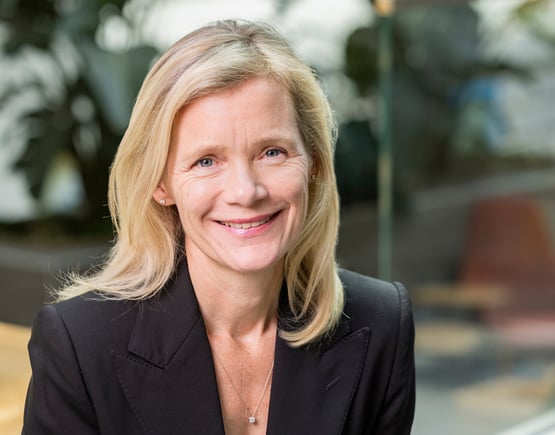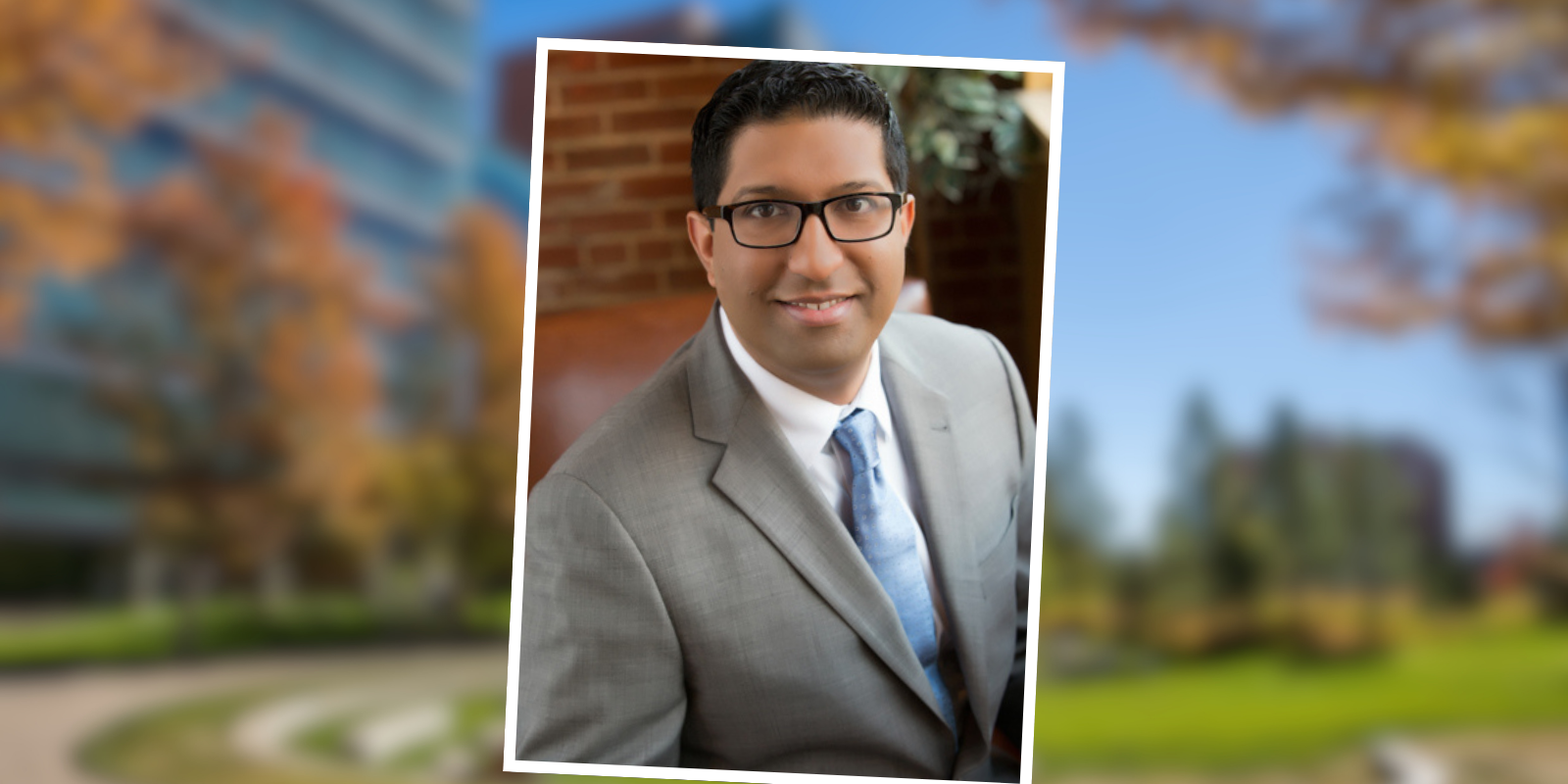Before “wellness” was a commonly discussed concept, before health care as a profession widely recognized that clinician well-being can correlate with patient well-being, Lotte Dyrbye, MD, MHPE, took a gap year between her undergraduate studies and medical school.
“I had been working so hard for so long and I knew I needed a break,” she recalls. “That time helped me grow a little bit as an adult and gave me breathing room to get ready for the next challenge.”
During that year she worked in the lab at a small biotech company, focusing on World Health Organization-funded research on technology designed to help scientists in Africa detect malaria strains. She also frequently borrowed her father’s bike, with its hard leather seat, and rode for many, many miles.
At a point when her medical career was just beginning, she recognized that “if I’m going to keep up this level of stamina and academic rigor, I need to engage in a little bit of self-care.”
This experience, among many others, laid the foundation for building a career in which she has become a pre-eminent national leader and researcher in clinician well-being and burnout.
In early 2022, Dyrbye was named chief well-being officer for the University of Colorado School of Medicine. In this new position, and also as senior associate dean of faculty, she is focused on strengthening partnerships with stakeholders throughout the school and leading initiatives to reduce physician, resident, and medical student burnout. She is also overseeing faculty affairs, faculty and leadership development programs, and diversity, equity, and inclusion efforts.
“A large body of research delineates that burnout is associated with suboptimal patient care and with delivering more costly care,” Dyrbye says. “The mission of our clinical partners and the mission of the school are all dependent on the well-being of the health care workforce. Without greater attention to our people, we can’t achieve any of our missions.”
Time plus effort equals outcome
Before she was at the forefront of clinician well-being research and innovation, however, Dyrbye was a 5-year-old who loved the TV show “Emergency!”
Her family had newly moved to Maryland from their home country of Denmark so her father, a mechanical engineer, could pursue a significant career opportunity. As a kindergartener, Dyrbye was intrigued not just by the weekly small-screen drama, but by the medicine itself, “so from a very young age I thought that would be my career path,” she recalls.
Her family returned to Denmark when she was 10, and returned to the United States when she was 12 for another career opportunity for her father, this time in Wisconsin. Through middle school and high school, she really enjoyed her STEM classes and studied biology at St. Olaf College in Minnesota.
While pushing through organic chemistry with flash cards and late nights, she learned the vital lesson that time plus effort equals outcome. Because St. Olaf’s student body was small, she got a personalized education from excellent, involved professors and graduated at the top of her class.
Yet, she ruefully admits to bombing the MCAT. “I don’t have a great excuse,” she says. “I didn’t have a migraine, I hadn’t experienced a traumatic event, I’d tried to study as I was going through college. But it was a huge shock to my ego regardless.”
With meaningful support from her professors, who expressed complete confidence in her, “I was able to pick myself up and I just figured I didn’t have anything to lose, I’d apply to medical school anyway even with bottom-of-the-barrel MCAT scores,” she remembers.
She applied and was accepted to the University of Wisconsin School of Medicine and Public Health in Madison, and began classes the summer after the gap year when she learned the value and necessity of self-care.
Choosing continuity of care
Through her medical studies and rotations through various specialties, Dyrbye gravitated to general internal medicine for multiple reasons, including the opportunities it offered to provide continuity of care.
“I enjoyed differential diagnosis, for example not knowing whether a patient’s shortness of breath was caused by deconditioning or blood clots in the lungs, and then investigating down to the cause,” Dyrbye says. “It’s a specialty that requires you to be comfortable with a certain degree of uncertainty and learn to trust your instincts, trust your experience, and trust that the patient is going to call you back if it gets worse.”

Lotte Dyrbye, MD, MHPE
Through a rigorous residency that included several hospitals in Seattle, during the time before work hour restrictions, some of her rotations were at county hospitals with consistent high volumes of extremely acute patients, including people dealing with issues associated with heroin addiction or overdose.
“I remember coming home from call and my husband putting food in front of my face, then just falling asleep,” she recalls. “It wasn’t uncommon to be on call every third or fourth night. We’d get four days off a month, and every so often there’d be a golden weekend with two days off in a row so my husband and I could pack up our backpacks and go somewhere wonderful.”
The challenges during and after residency were intense, and included the birth of twin daughters after she entered private practice, but they also broadened Dyrbye’s perspective on the then-nascent field of clinician well-being. Following residency, she went into private practice for several years near Seattle, “which was a really good opportunity to learn the business of medicine while seeing patients full-time,” she says.
However, when she saw an ad for a general internal medicine position at the Mayo Clinic in the back of the Journal of the American Medical Association, she applied on a whim. Her roommate from her first year of medical school was a faculty member there and put in a good word, but she didn’t tell any extended family when she went to interview, including her husband’s mother, who was a nurse at the Mayo Clinic. She didn’t want to get anyone’s hopes up.
She was offered the position, and in 2001 began working at Mayo Clinic in the Department of Medicine and Division of Community Internal Medicine.
Researching clinician well-being
Many factors continued shaping and guiding her interest in burnout and clinician well-being, including beginning to teach at the Mayo Clinic College of Medicine and Science and embarking on research related to burnout and well-being. She also reflected on her own experience as a medical student and resident, as well as a parent of three daughters – the twins were followed by another daughter three years later.
“The first research I did was looking at the prevalence of burnout in medical students and its association with personal life events,” Dyrbye says. “Medical school is already so stressful and we’re putting people at the very edge of what they can handle. So, when they have a negative personal life event, that can be it. We began looking at the relationship between personal life events, burnout, and alcohol use disorder, at a time when people would not believe there was such a thing as burnout.”
Dyrbye and her colleagues at the Mayo Clinic expanded their research to many facets of clinician burnout, becoming leaders at the forefront of the burgeoning field. Their research comprises more than 10% of the citations in the seminal National Academies of Sciences text “Taking Action Against Clinician Burnout.”
Dyrbye co-developed the Well-Being Index, an online self-assessment tool for clinicians that is used nationally and internationally. She also led multi-institutional research initiatives, including groundbreaking national research published in May 2022 that found, through a cross-sectional study of more than 6,500 U.S. physicians, that more than 30% of respondents had experienced discrimination or mistreatment from patients or patients’ family members or visitors.
Pursuing new opportunities
As Dyrbye’s research established her as a national leader in clinician well-being and burnout, she received emails weekly from schools and hospitals trying to recruit her. She didn’t pay much attention to them until an email from Shanta Zimmer, MD, senior associate dean for education and a professor of medicine in the division of infectious diseases in the CU School of Medicine.
“I was serving on the search committee for the chief well-being officer position and decided to take my own advice and ‘play to win,’” Zimmer says. “Dr. Dyrbye is an internationally recognized leader in faculty development, research, and mentorship around physician well-being and the learning environment. When I arrived to the CU School of Medicine in June 2016, she was a visiting professor on our campus and I remembered the depth with which she responded to questions from the audience, including mine, about differences in well-being and resilience measures around the experiences of Black physicians and residents.”
Zimmer composed her email on a Sunday afternoon “as a way of taking a chance that we could recruit a star like her to our campus,” she says.
Dyrbye didn’t read the email right away, but didn’t delete it either. She thought about it, discussed it with her husband – their daughters were grown and off to college, but the Mayo Clinic had been her clinical and research home for 20 years. Finally, Dyrbye decided to throw her hat in the ring for the new position that synthesizes much of her previous experience and research.
Building relationships
In her roles as both chief well-being officer and senior associate dean of faculty, she partners with stakeholders to address well-being and burnout not just at an individual level, but at an institutional one. Factors such as equity policies, faculty hiring and retention, career development, organizational structure, and many others can affect wellness outcomes.
“My initial goal really is listening and building relationships, taking inventory of all the wonderful things happening here, and engaging with the extremely talented workforce,” Dyrbye says. “I have ideas and I have vision, but this work depends on partnership and on stakeholders coming together.”
She adds: “How can we better support clinicians engaged in educating our increasingly diverse student population? How can we develop career pathway programs that align with people’s goals, whether it’s toward administration or running their own labs, whatever it may be? How do we develop infrastructure to address factors that are getting in the way of faculty well-being, and through a lens of shared responsibility? It’s important work and I’m excited to be doing it with fantastic partners.”



